Win boat trip discounts and prizes! Claim your plunder here🏴☠️
Ahoy, kid sailors save 20%! grab yer treasure today! book your adventure now!
Win boat trip discounts and prizes! Claim your plunder here🏴☠️
Ahoy, kid sailors save 20%! grab yer treasure today! book your adventure now!
These majestic mammals have a special place in our hearts, their intelligence, curiosity, playfulness, and preference for moving in groups, have cemented their status as one of our favourite sea creatures.
The delight we see on the faces of those who come on our boat trips never gets old, and even the Coast Boat Trip team still gets giddy. If you’re wondering what kind of dolphins you can see in the UK, look no further – in Cornwall we’re lucky enough to be home to the Common, Bottlenose, Risso, Striped, and Atlantic white-sided dolphins. A pod of dolphins can often be found just off the coastline of St Ives, Penzance, Lands End and Hayle.

Book your Coast Boat Trip for the marine life experience of a lifetime!
We will never tire of supporting Cornwall’s wildlife, and educating locals and visitors alike on the magic of nature on our shores. Over the years we’ve learnt where the best places to see dolphins in Cornwall are. Every year on Coast Boat Trips we see dolphins, and each time makes us just as happy as the first sighting did. We are home to dolphins and porpoises, and their curious natures mean they often come to say hello.
Cornwall is undoubtedly one of the best places to see dolphins in the UK. From the north coast to the south coast, from estuaries to harbours, on calm days you’re likely to see them, but especially with us.
Common dolphins can be seen all year round, and even the bottlenose on the off chance. However, April – September can be the best time of year to see them. Dolphin watching in Penzance is beautifully picturesque, and playful dolphins in Hayle harbour are often spotted.
Our main resident dolphins are the Common dolphin and Bottlenose dolphins, of which we have one inshore group and multiple offshore groups. After many years of experience, we’re now a dab hand at recognizing species and often see Risso, Striped and Atlantic White-Sided dolphins too.
Common dolphins are also known as short-beaked dolphins, and remain offshore but come close to shore for feeding purposes. We often spot them in groups, travelling at speed – it’s an unforgettable experience.
A claim to fame this small island (UK) can be proud of is that Bottlenose dolphins in our waters are the biggest of their kind. This is so they can thrive in our chilly waters. They love to swim alongside boats, riding the waves with them.
If you’re keen to see dolphins in UK waters, the South West is your best bet. We’re home to England’s only pod, a resident pod of 29 Bottlenose dolphins. This pod is under threat due to human disturbance, something we ensure would never negatively impact the dolphins or any of the marine wildlife we pass by on our boats.
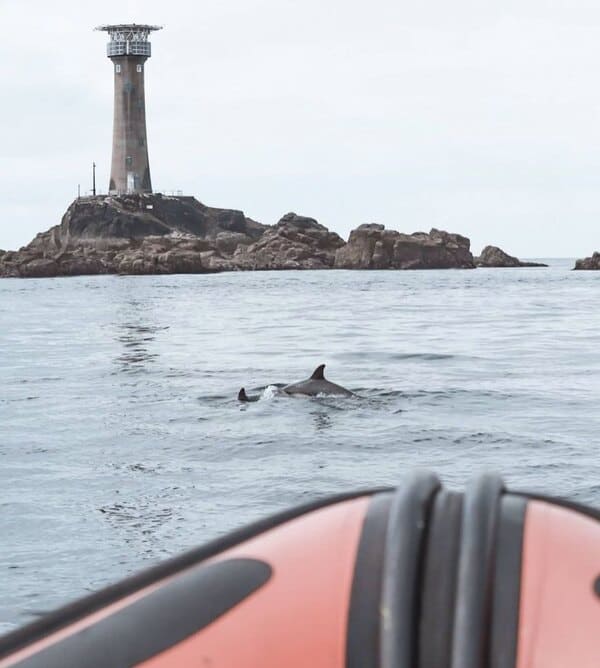

Visit the Cornish Wildlife Trust website to see how you can support the Cornish population of dolphins and porpoises.
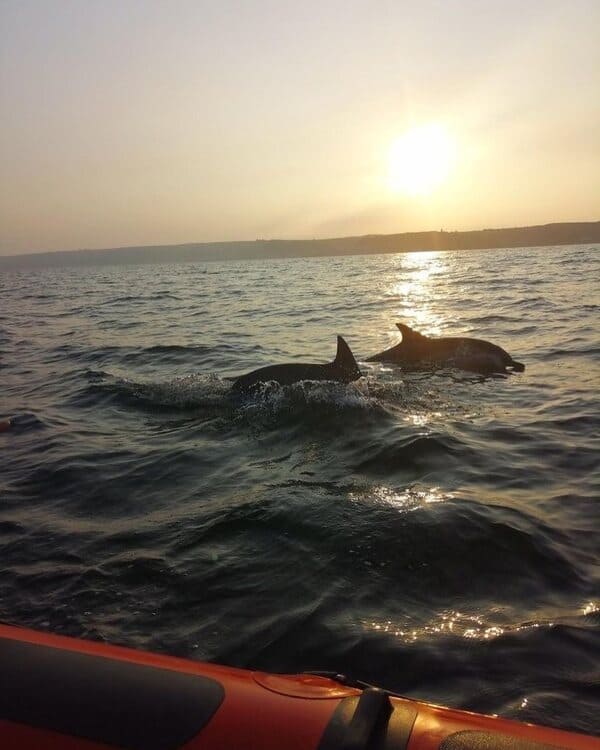
A group of dolphins is called a ‘Pod’. Pods can be made up of 2 – 30 dolphins, and much like families in human society, these pods are incredibly multi-faceted, with hierarchies, hunting strategies and communication skills.
Members of the pod can leave and reappear, with exact numbers fluctuating, much like communities of chimpanzees. This is called a ‘fission-fusion’ society. Within the pods themselves, alliances are formed and broken, with males often pairing up with herd females and protecting themselves against other dolphins.
Pods can group together, forming ‘Super Pods’, this can be as many as a hundred or even several thousand dolphins. Safety in numbers! You might think this is rare, but it’s surprisingly common and absolutely spectacular. It can happen anywhere in the world and occurs during times of courtship or when there is plentiful prey, and unlucky anchovies.
Is a dolphin a fish or a mammal? This might sound like a trick question… Although dolphins live in the ocean all the time, they are mammals for several reasons. Unlike fish, who have gills to filter oxygen into their bodies and breathe underwater, dolphins are warm-blooded and breathe in air through their lungs. This is why they make frequent trips to the surface and grace us with their presence.
Additionally, dolphins give birth to live young and then feed them milk, rather than laying eggs as fish do. Surrounding the dolphin’s blowhole, which acts as a nose, is a small amount of hair, so there you have it – warm-blooded, milk and hair equals a mammal.
Different species of pregnant dolphins carry their offspring from 10-18 months, and research shows that mothers sing their own names to their unborn calves. This signature whistle is taught before birth, and in the following two weeks after birth, and will help the animals to identify each other.
The blowhole at the top of a dolphin’s head is the equivalent of our nostrils, it allows the dolphin to breathe oxygen into the lungs. Its handy location, thanks to evolution, allows the dolphins to rest or swim just underneath the surface, exposing the blowhole when breaking the surface. The strong muscles then tightly seal the blowhole, to stop any water from entering the lungs.
On average dolphins are able to hold their breath for several minutes but tend to breathe up to 4 or 5 times a minute. This varies with each species, the Bottlenose dolphin for example can hold their breath for up to 20 minutes! This allows them to dive for food, but otherwise, they’ll come up for air 2-3 times per minute.

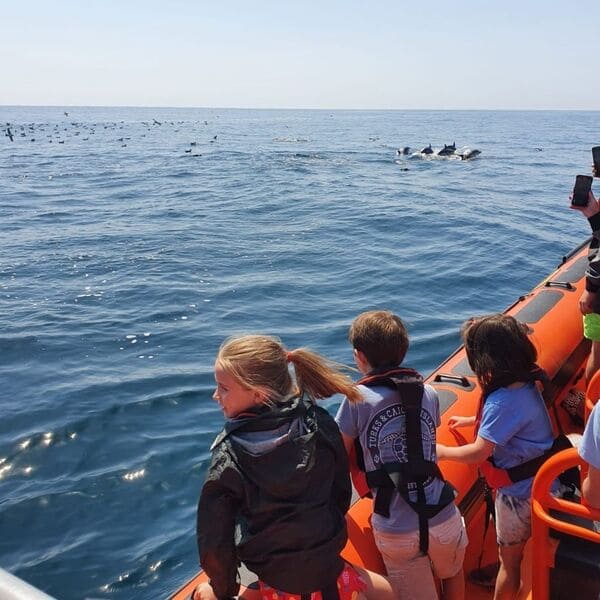
You might be wondering how dolphins sleep, it’s a question that pops up regularly on our Coast Boat Tours. They will rest in the water, vertically or horizontally, or sleep while slowly swimming in the pod. Dolphins can also enter a deep sleep, where they’ll float at the water’s surface. This is called ‘logging’, simply because they resemble a floating log.
Fascinatingly, Bottlenose dolphins sleep with one eye open. Only half of their brain shuts down, with the opposite eye, with the other half staying awake to watch for predators, and signal when air is needed. Two hours later, they’ll switch over to the other side of their brain – incredible!
River dolphins are an important indicator of a flourishing river ecosystem. A healthy river population of dolphins suggests a good overall river status, but a declining population is a cause for alarm.
Bottlenose dolphins are content cruising along at a slow 2 mph, but occasionally a burst of energy will see them gliding through the water at speeds of 30 mph.
Dolphins blow bubbles from their blowhole whenever they exhale, expelling the water before breathing air back in. Scientists have also noted that they like to blow bubbles too when they are excited, surprised or curious.
Commercial fishing nets are vast, up to 100km long and baited with thousands of hooks, ropes and traps. Dolphins and whales are all too often casualties of the fishing industry, and the more they struggle against the net the more their dorsal fins and bodies become entangled.
You’ll find a worthy competitor in a dolphin, they are quick-thinking problem solvers, great mimics and fast learners. They’ve been shown to be capable of empathy, innovation, grief and joy.
There are currently 42 species of dolphins, and their lifespan varies from around 20 years with smaller species, to 80 years for larger dolphins. The largest member of the dolphin family is the Orca (killer whale), and the UK has a resident Orca that on very rare occasions can be seen. The oldest Orca known in the world was appropriately nicknamed ‘Granny’ and was widely photographed over the years. It is thought she was 105 years old when she was last seen in 2016.
Female dolphins tend to live longer than male dolphins, with female Bottlenose living for more than 60 years, compared to the males who can reach their 40s. You might wonder how on earth they begin to correctly age a dolphin. Some have been photographed and monitored since birth, and with others, a cross-section of their teeth, much like trees, gives a good indication.
Not so surprisingly, the Bottlenose dolphin’s lifespan in captivity averages 12 years, with 52.26% of Bottlenose dolphins born in captivity not surviving past the first year. This is a higher mortality rate than in the wild. Whilst it’s hard to be sure why this is, it’s suggested that those first few years in natural social groups and environments in a wild pod are key.
Captivity has a huge impact on the well-being and ultimately the lifespan of these amazingly intelligent, inquisitive animals, and it’s why we’re so proud to champion nurturing the habitats of wild dolphins.
You might have thought the only way to see dolphins was in captivity, but dolphin watching in the UK is a possibility and on our boat trips we give you the best chance to do so. Wild dolphin watching in Cornwall via our unobtrusive boat tours is the best way to experience these incredible animals in their natural habitats, on their own terms.
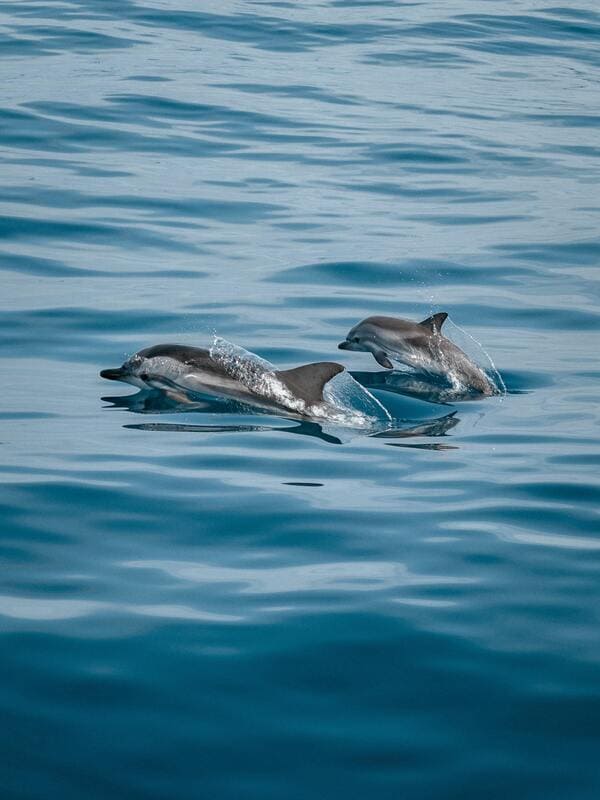
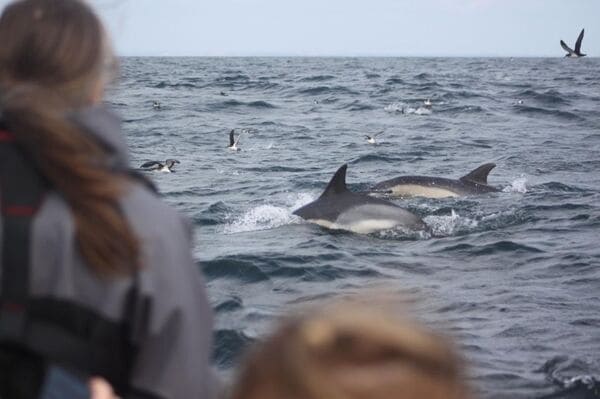
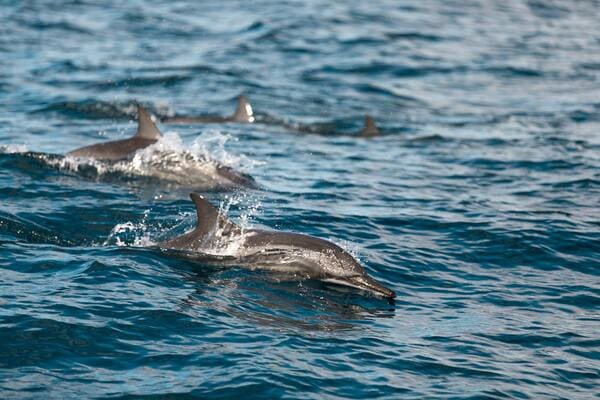
Dolphins are water mammals, but with so many species they aren’t limited to any one specific area. They live in the world’s seas and oceans, but some are also native to rivers. Orcas’ size protects them against the harsh temperatures in the Arctic and Antarctic, but other dolphin species also found in cold waters are the white-beaked and hourglass dolphins. Most species prefer warmer waters, don’t we all.
The food dolphins eat depends on their habitat, but they are active predators and eat a variety of fishes, squids and crustaceans, jellyfishes and even octopuses.
Book your Coast Boat Trip for the marine life experience of a lifetime!
We see dolphins all year round in Cornwall, but we do tend to see more from April to September when the waters are warmer. Their distributions are often based upon their food sources, as they follow their food. This means any time of year can be a peak time to see them, but by monitoring the waters at Coast Boat Tours we know where the best opportunities lie.
At daybreak, dolphins tend to be more active, especially if the water is calmer than it is at night. Dolphins’ behaviours are influenced by so many factors, from the tide, wind speed, prey and moon cycles.
We’re firm believers at Coast Boat Trips in not disturbing the natural environment and its animals in any way, we are here to be a passive observers. The dolphins in our waters are wild animals and should be treated with respect and caution. Whilst there are still a few places in the world you can swim with captive dolphins, extensive research shows this negatively impacts the health and wellbeing of these mammals. But the experience of seeing wild dolphins from our boats is just as exhilarating and guilt-free.